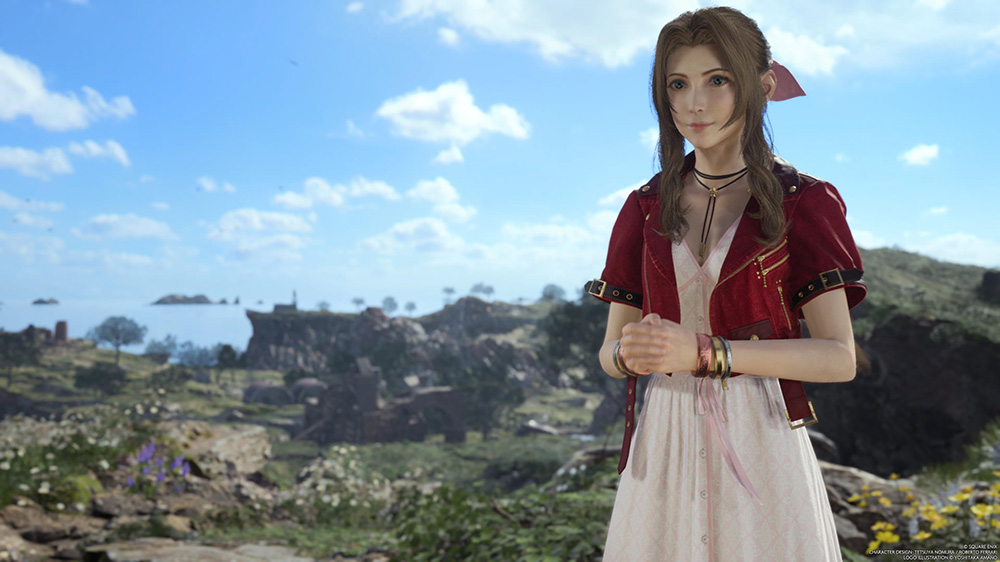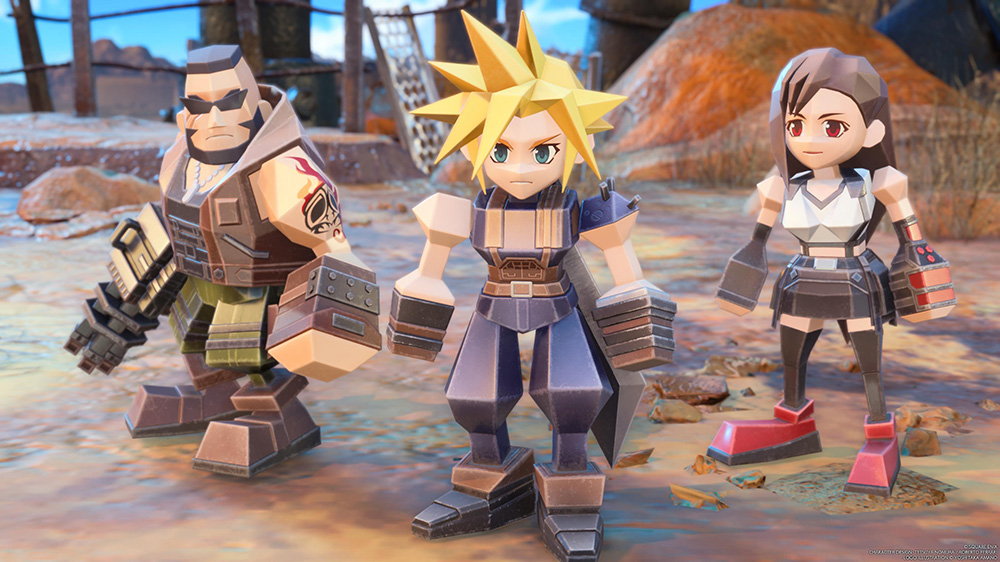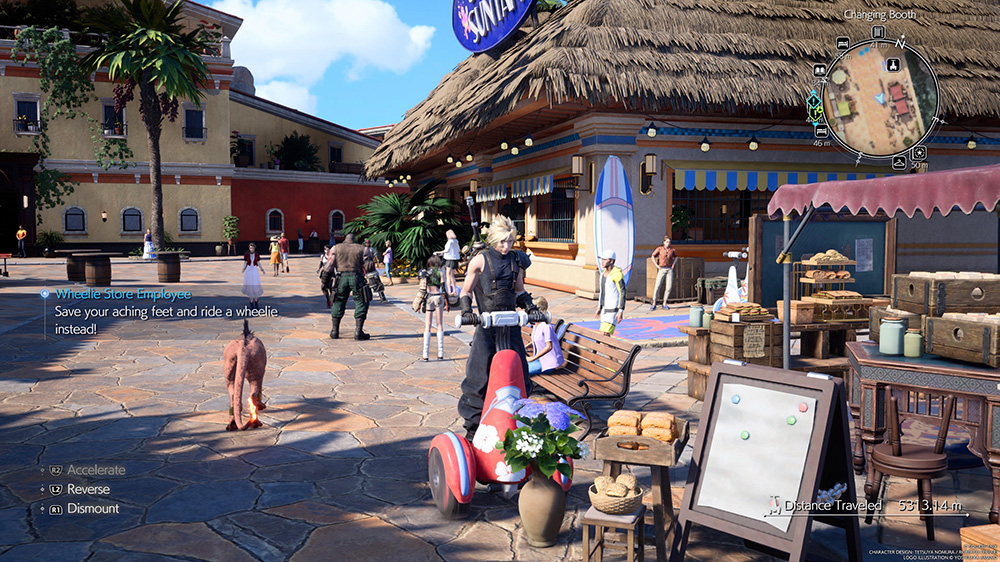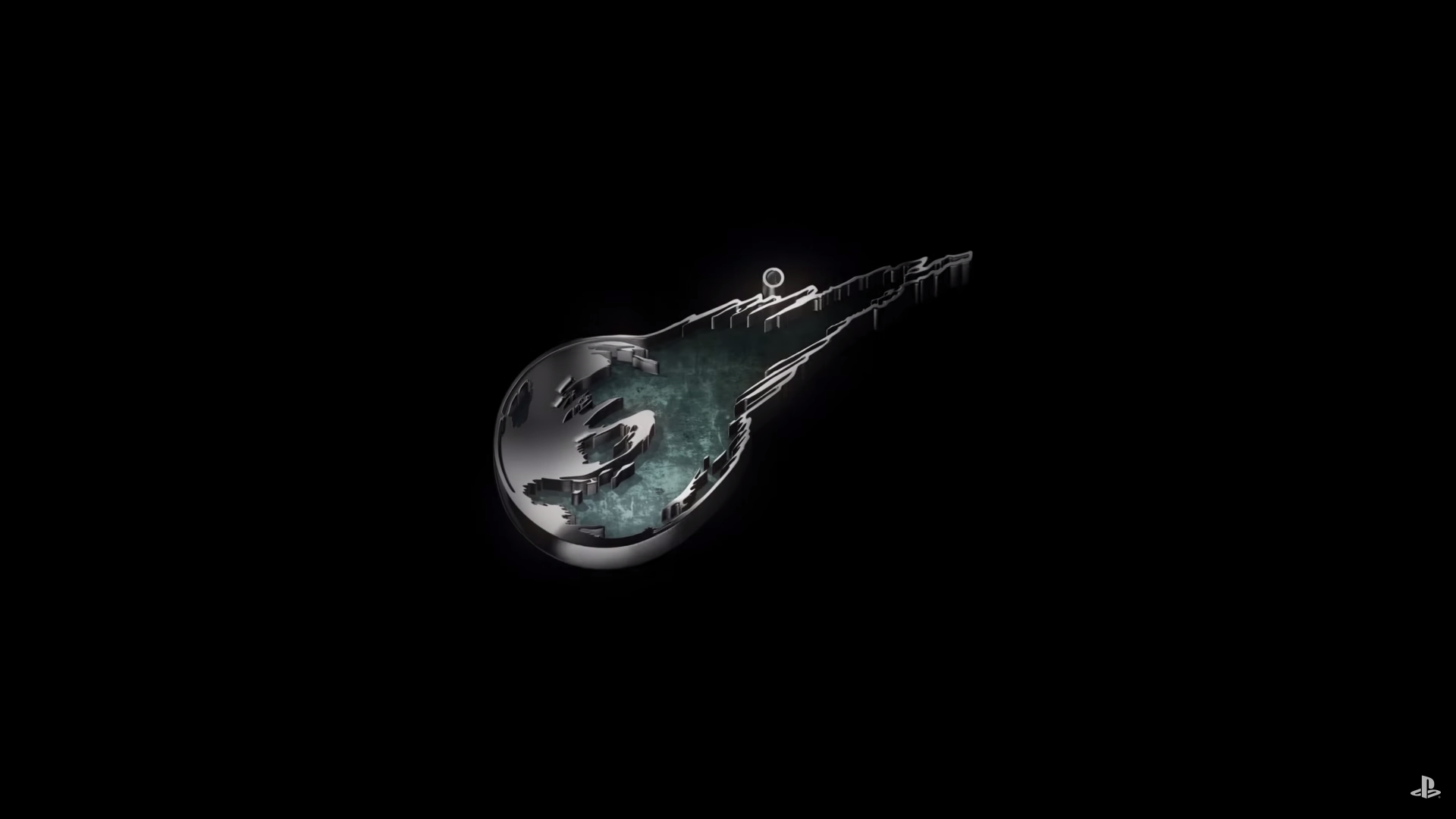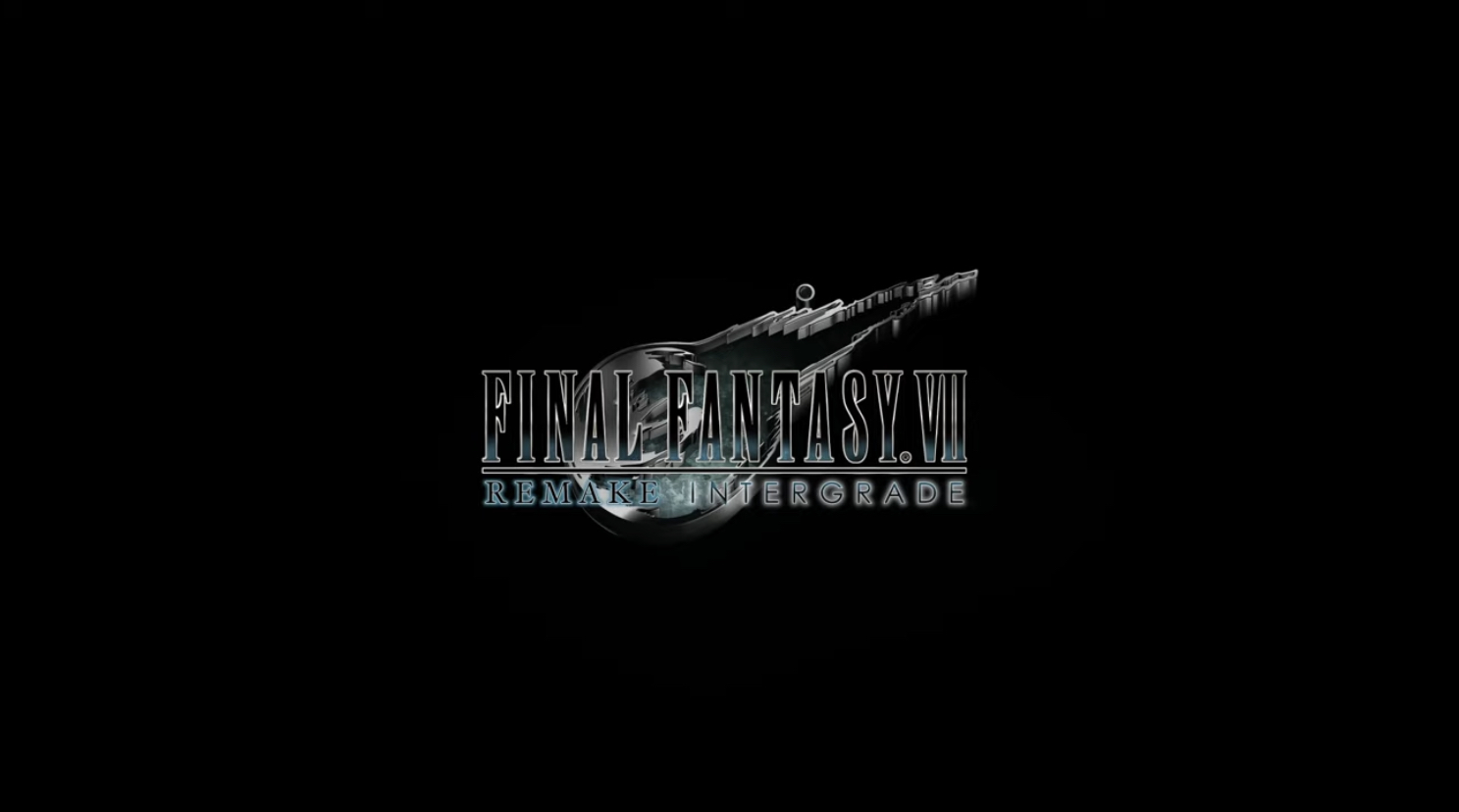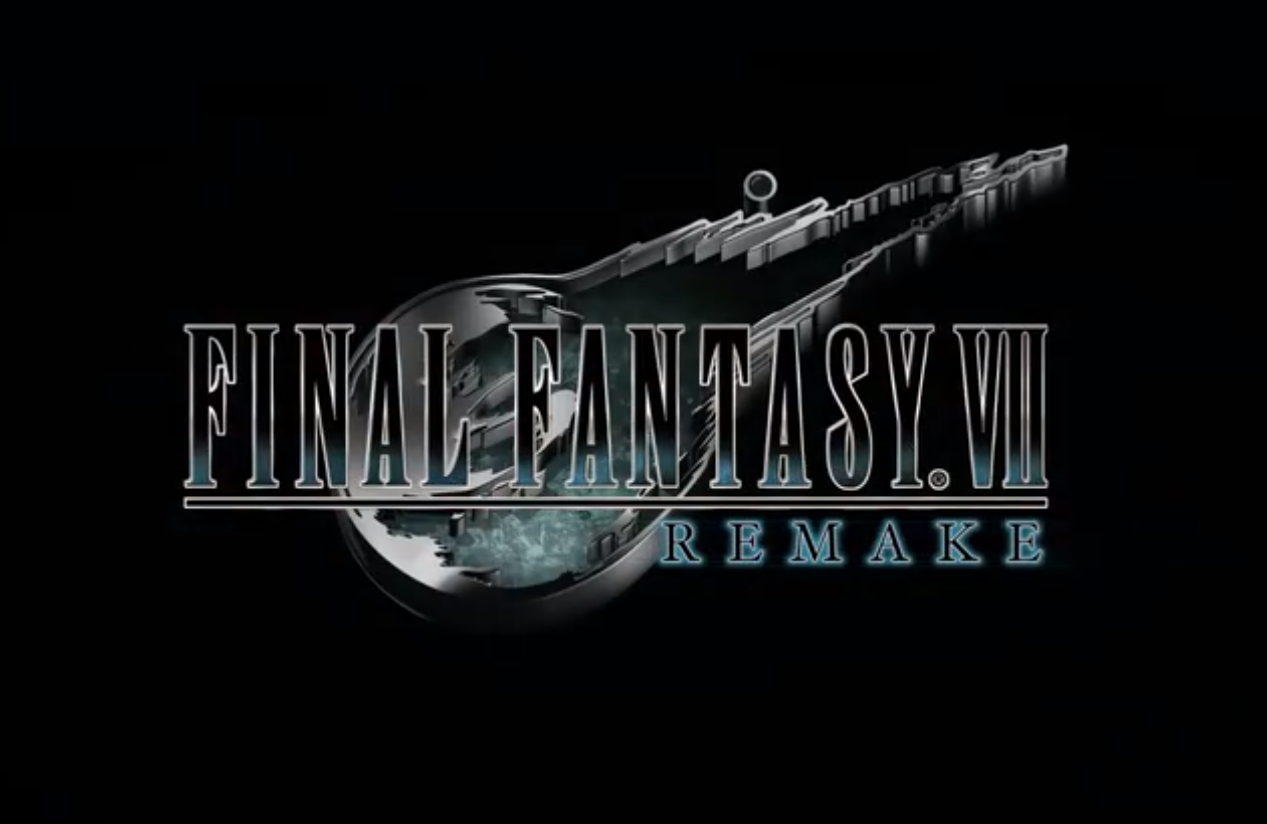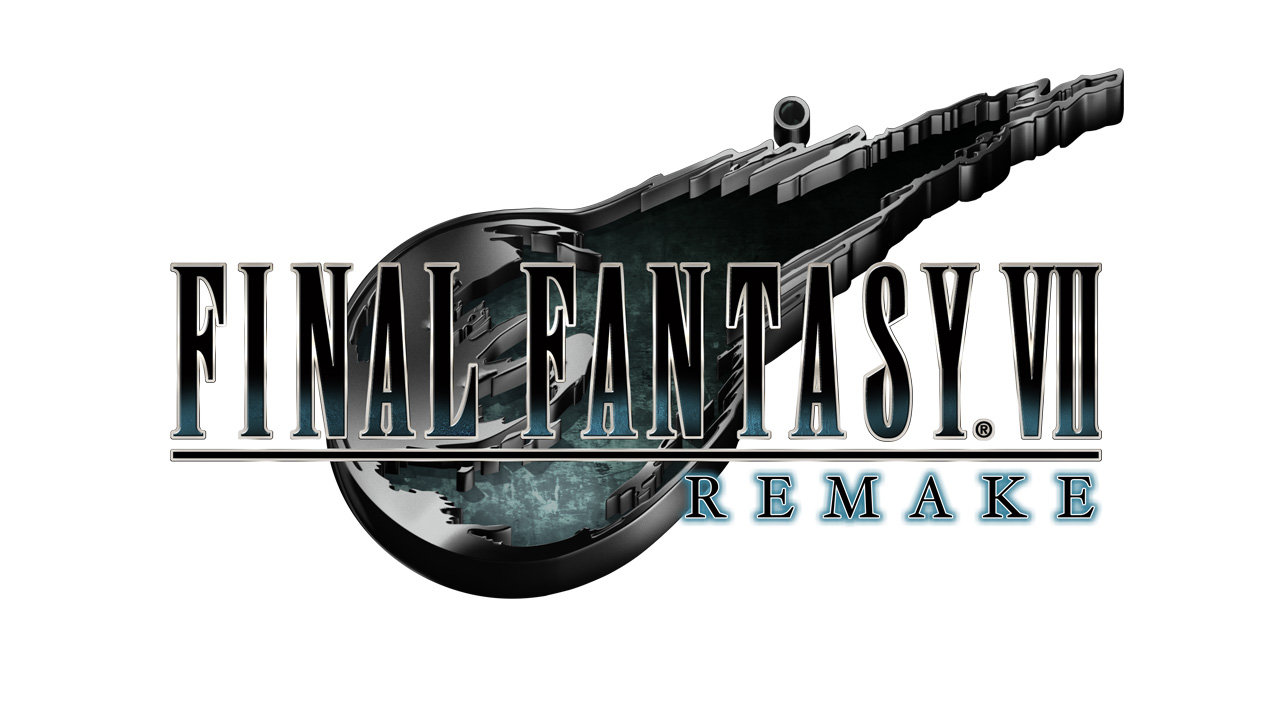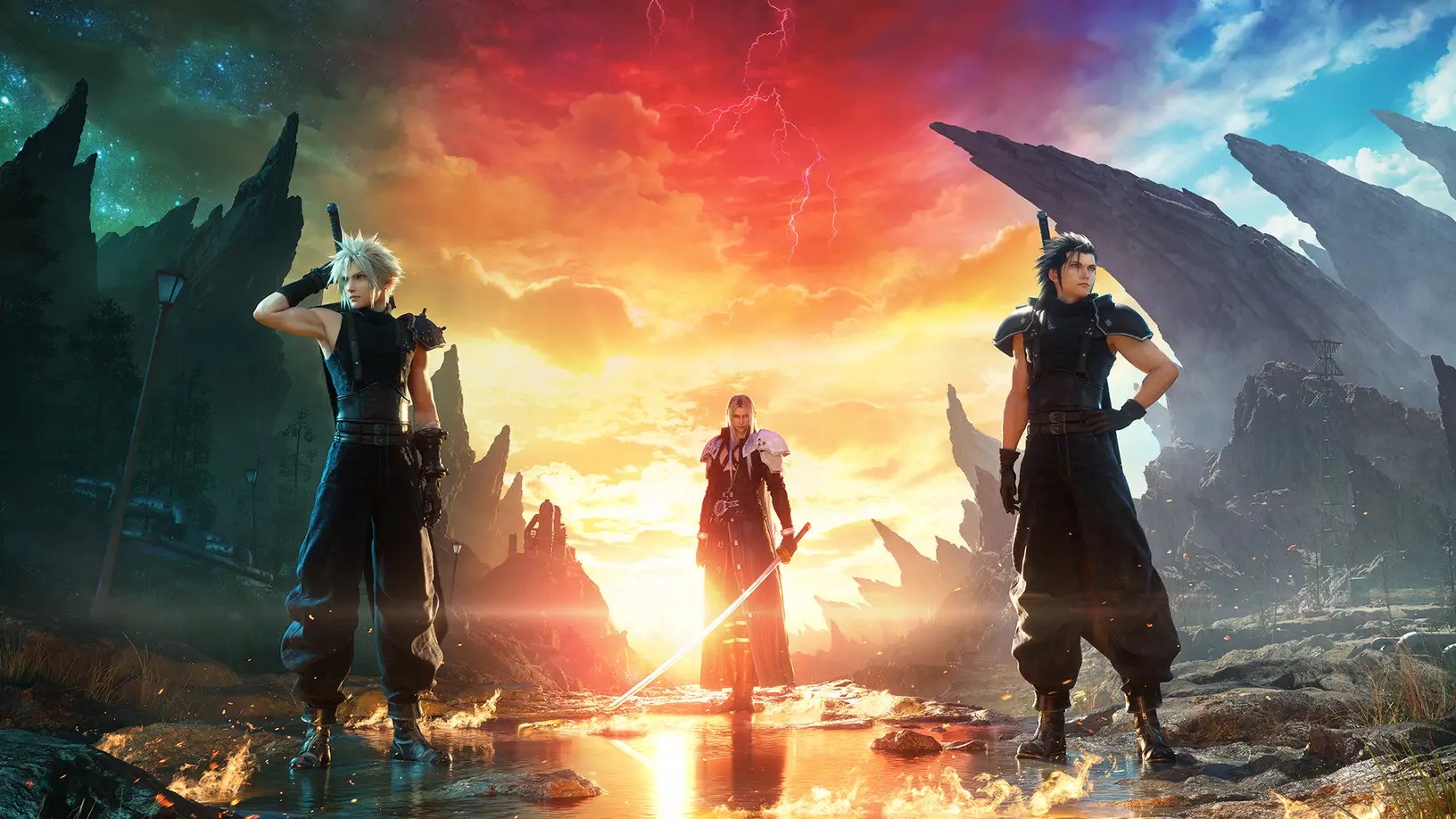
Square-Enix’s project to remake Final Fantasy VII feels itself like a gargantuan odyssey through the decades, from a distant fan hope spurred on by a deceptive PS3 tech trailer, to years of them working out how it could actually be done, to the decision to turn the original game into three to adequately upgrade and flesh the game out to modern standards. By the time all three games are out, it will have been likely have been at least ten years since the first part of the remake was announced, and thirty since the original Final Fantasy VII came out on PS1.
It definitely takes time to create something this meticulously detailed. The first part, Final Fantasy VII Remake, released back in 2020, expanded the original game’s introductory hours and location into its own 40-80 hour epic. The sequel, Final Fantasy VII Rebirth, which has just been released for PS5, has a larger task as it tackles the the next part of FFVII where the characters explore a good chunk of the world map. There are exponentially more locations to visit, stories to unravel and gameplay styles to translate, but somehow Square-Enix pull it all off in a spectacularly epic-sized game that continues their recent run of Final Fantasy success stories, from XIV to Remake to Stranger of Paradise to XVI.
As fans who played Final Fantasy VII Remake will know, this new trilogy of games is a remake in the same sense as Neon Genesis Evangelion’s Rebuild films. That is to say, these games appear to be both remake and sequel at the same time, with the same general events occurring, but varying in some key aspects as some characters appear to retain knowledge of the original story through some time nonsense. Remake ended with the promise of an uncertain future, as Cloud, Aerith and their party of heroes broke the chains of fate, as they left the city of Midgar. That may have been a little ambitious, as for the most part Rebirth plays events fairly close to the PS1 original. Tracking mysterious black cloaked figures who are drawn to the world-threatening Sephiroth, our gang encounter the same locations in the same order that we remember – Kalm, Junon, Costa del Sol, Mt Corel, Gold Saucer, etc – but have significantly more to do at each stop. Now, rather than briefly stopping at Kalm, you’ll be exploring ruins and leaning the history of the Republic of Junon. Now, rather than just being on a cruise to Costa del Sol, they’re part of a multi-tiered card battling competition. It’s a good thing, then, that each of these locations are filled with charming characters and genuinely goofy yet sincere moments that make exploring them to their fullest extremely satisfying. However, the narrative does take some twists and turns, with the new inclusion of a character from FFVII‘s recent battle royale and mobile game that 99% of us will have never heard of, and an intriguing ‘alternate timeline’ first introduced in Remake that is revisited throughout Rebirth at various intermissions.
Given the task of expanding ten hours of content into ten times that, Rebirth structures itself as a series of open areas connected by periods of story progression. For instance, after an introductory flashback, you’re thrust into the ‘Grasslands’ region outside Kalm, which for all intents and purposes represents the northern half a continent. You are free to progress the story at any stage by following the main quest marker to lead you into the next, ‘Junon’ region, but you’ll be missing out on the majority of the game’s content. Each region is full to the brim not only with side-quests to undertake for characters around settlements, but ‘world intel’ to collect for returning scientist character Chadley. This includes specific suped-up enemies to fight, crystal materia springs to discover and analyse, materials to unearth for crafting, and ‘divine’ shrines that make battles to obtain powerful summon spells much easier. Often there’s even tasks within tasks, like meeting certain objectives in hunting quests to specifically avoid an attack or stagger an enemy. Points of interest are unlocked through the longtime gaming tried-and-true method of activating towers around the world, but even outside of those you can often discover unmarked caches of chests in interesting locations.
It’s actually pretty staggering how much there is to do, as it will take you potentially dozens of hours just to get out of Junon, a fairly simple route in the original. Rebirth succeeds in making all of this feel not only necessary, but satisfying to complete, with a constant stream of rewards coming for your engagement in side activities. While I wish there had been a few more weapons thrown into the mix, as there isn’t a huge selection as is, you’ll constantly be getting materia, items, materials and even interesting lore that expands greatly on the history of FFVII‘s world. I will say it doesn’t always work so well for the game’s pacing. This stage of the original game is a pretty simple manhunt – Sephiroth has proven to be a cataclysmic threat, and now you’re chasing down leads to find him and stop him. However, it feels pretty stop-start, with the party never feeling pressured to worry about sorting things out right now. This works in the context of allowing players the freedom to explore the world at their leisure, but also means that much of the story is missing some of the original’s drive.
Both the item and combat systems have been expanded from Remake. A crafting system has been worked into your inventory, so you’ll spend a lot more time now collecting raw materials and converting them into useful items, as well as gaining the ability to upgrade your accessories. Characters also now have FFX Sphere Grid-esque upgrade ‘folios’ that can provide stat boosts as well as unlock new ‘synergy abilities’. These are new attacks that can be activated in combat between two party members which either deal massive damage or provide other beneficial effects. The catch is that both characters required for the move have to have performed a requisite number of unique abilities to activate the mode, which can usually only occur if you’re directly controlling them. It thus becomes a good incentive to keep switching between characters during combat, rather than just relying on Cloud as your one-man Action-RPG stagger-and-damage dealing machine, and learning the ins and outs of all the playable characters, which include newcomers Yuffie, Red XIII and others who are not all fully-playable.
Synergy abilities also contribute to an expanded ‘relationship’ system that tracks every party member’s feelings towards Cloud. This seems to be affected by a few factors – how often you work with certain characters in combat, how you respond to them at key dialogue choices, and whether you complete side-quests that are important to them on some personal level. For instance, Cloud’s relationship towards the cat-like Red XIII may grow if he’s paired with him on a side-quest that involves tracking a target through scent. Again, this feeds back into making a lot of the side-content in Rebirth feel vital to actually getting the most out of the game. Of course, there are famous points where these relationships will bear fruit, which players of the original FFVII will be familiar with, but the character interactions between party members are fun enough that all of these tasks are worth doing in and of themselves.
Rebirth is also absolutely chock full of mini-games of all shapes and sizes. While 1997’s Final Fantasy VII certainly liked to throw in a few mini-games, the Gold Saucer was a hub for them and there were special events like the parade in Junon, Rebirth is by comparison overflowing. Without detailing every mini-game (we’d be here forever), you’ll find yourself playing piano rhythm games, getting into sit-up contests, frog-jumping on a floating platform, playing Rocket League, shooting targets, playing a board-game, and way, way more. Each of these have stages of difficulty and various modes within them, but probably the most substantial is an entirely new card game called Queen’s Blood. It’s not quite on the level of Final Fantasy VIII‘s famous Triple Triad, nor is it as expansive, but it is an interesting conceit involving playing cards to win ‘lanes’ on a chess-like board, with some particularly fun puzzles that throw specific situations at you.
For the most part, Rebirth looks absolutely gorgeous as well, with the realistic ultra-detailed landscapes often spotted with both natural and unnatural ruins, or mechanical monstrosities like Junon’s cannon. Characters have been updated to look even better than their appearance in the Final Fantasy VII Advent Children movie, yet still retain the costume and design elements which made them iconic to begin with. The game runs solidly on Quality mode at a steady 30fps, but becomes noticeably blurry and un-detailed on Performance mode, although apparently modifications to this are coming in patches. The game’s soundtrack is also on another level, both in terms of quality and in terms of volume, with an incredible number of tracks that are either re-imaginings of pieces from past games, or completely original tunes that run the gamut from orchestral to techno to ‘dog theme’.
As the middle part of Final Fantasy VII‘s remake trilogy, Rebirth doesn’t have the benefit of being able to coast off the initial ‘wow’ factor of Remake seeing the iconic FFVII’s characters and locations remastered, nor is it able to provide a definitive conclusion that ties both the original’s and new story threads together. It succeeds nonetheless by making the journey as engaging and satisfying as possible, through great writing that isn’t afraid to lean on its comedic elements, a fun-yet-tactical combat system and a frankly insane amount of expanded content that fleshes out the world in ways we just weren’t expecting. I’m not sure I can wait another 3-4 years for Part 3, but between Remake and Rebirth, I’m confident the future of Final Fantasy VII is in good hands.
This review is based on code provided by the publisher for PlayStation 5.
-Detailed and rewarding expansion of FFVII's world, which fleshes out every aspect included to its fullest -Nails the goofier aspects of FFVII's characters -Upgrades to combat system encourage not focusing exclusively on Cloud -Charming assortment of addictive mini-games
-Pacing issues that naturally accompany stretching ten hours of the original game into a hundred here

